Sascha Ossowski
Learning the Value Systems of Societies from Preferences
Jul 28, 2025Abstract:Aligning AI systems with human values and the value-based preferences of various stakeholders (their value systems) is key in ethical AI. In value-aware AI systems, decision-making draws upon explicit computational representations of individual values (groundings) and their aggregation into value systems. As these are notoriously difficult to elicit and calibrate manually, value learning approaches aim to automatically derive computational models of an agent's values and value system from demonstrations of human behaviour. Nonetheless, social science and humanities literature suggest that it is more adequate to conceive the value system of a society as a set of value systems of different groups, rather than as the simple aggregation of individual value systems. Accordingly, here we formalize the problem of learning the value systems of societies and propose a method to address it based on heuristic deep clustering. The method learns socially shared value groundings and a set of diverse value systems representing a given society by observing qualitative value-based preferences from a sample of agents. We evaluate the proposal in a use case with real data about travelling decisions.
Algorithms for learning value-aligned policies considering admissibility relaxation
Jun 07, 2024Abstract:The emerging field of \emph{value awareness engineering} claims that software agents and systems should be value-aware, i.e. they must make decisions in accordance with human values. In this context, such agents must be capable of explicitly reasoning as to how far different courses of action are aligned with these values. For this purpose, values are often modelled as preferences over states or actions, which are then aggregated to determine the sequences of actions that are maximally aligned with a certain value. Recently, additional value admissibility constraints at this level have been considered as well. However, often relaxed versions of these constraints are needed, and this increases considerably the complexity of computing value-aligned policies. To obtain efficient algorithms that make value-aligned decisions considering admissibility relaxation, we propose the use of learning techniques, in particular, we have used constrained reinforcement learning algorithms. In this paper, we present two algorithms, $\epsilon\text{-}ADQL$ for strategies based on local alignment and its extension $\epsilon\text{-}CADQL$ for a sequence of decisions. We have validated their efficiency in a water distribution problem in a drought scenario.
Automated legal reasoning with discretion to act using s(LAW)
Jan 25, 2024Abstract:Automated legal reasoning and its application in smart contracts and automated decisions are increasingly attracting interest. In this context, ethical and legal concerns make it necessary for automated reasoners to justify in human-understandable terms the advice given. Logic Programming, specially Answer Set Programming, has a rich semantics and has been used to very concisely express complex knowledge. However, modelling discretionality to act and other vague concepts such as ambiguity cannot be expressed in top-down execution models based on Prolog, and in bottom-up execution models based on ASP the justifications are incomplete and/or not scalable. We propose to use s(CASP), a top-down execution model for predicate ASP, to model vague concepts following a set of patterns. We have implemented a framework, called s(LAW), to model, reason, and justify the applicable legislation and validate it by translating (and benchmarking) a representative use case, the criteria for the admission of students in the "Comunidad de Madrid".
Stream-based perception for cognitive agents in mobile ecosystems
Jan 24, 2024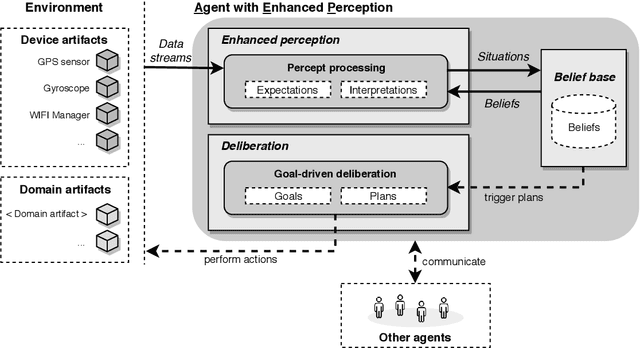

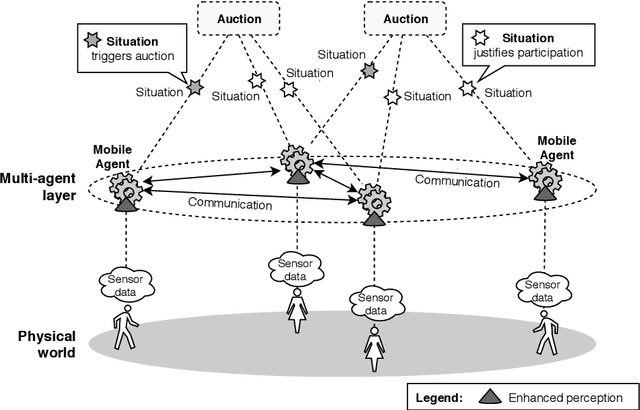
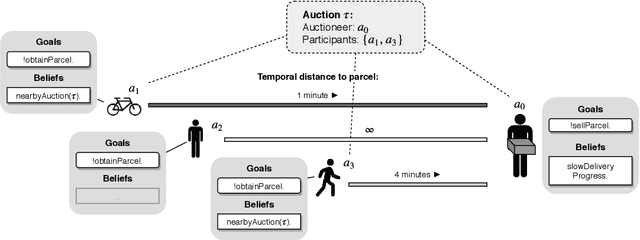
Abstract:Cognitive agent abstractions can help to engineer intelligent systems across mobile devices. On smartphones, the data obtained from onboard sensors can give valuable insights into the user's current situation. Unfortunately, today's cognitive agent frameworks cannot cope well with the challenging characteristics of sensor data. Sensor data is located on a low abstraction level and the individual data elements are not meaningful when observed in isolation. In contrast, cognitive agents operate on high-level percepts and lack the means to effectively detect complex spatio-temporal patterns in sequences of multiple percepts. In this paper, we present a stream-based perception approach that enables the agents to perceive meaningful situations in low-level sensor data streams. We present a crowdshipping case study where autonomous, self-interested agents collaborate to deliver parcels to their destinations. We show how situations derived from smartphone sensor data can trigger and guide auctions, which the agents use to reach agreements. Experiments with real smartphone data demonstrate the benefits of stream-based agent perception.
Evaluating Collaborative and Autonomous Agents in Data-Stream-Supported Coordination of Mobile Crowdsourcing
Jan 23, 2024
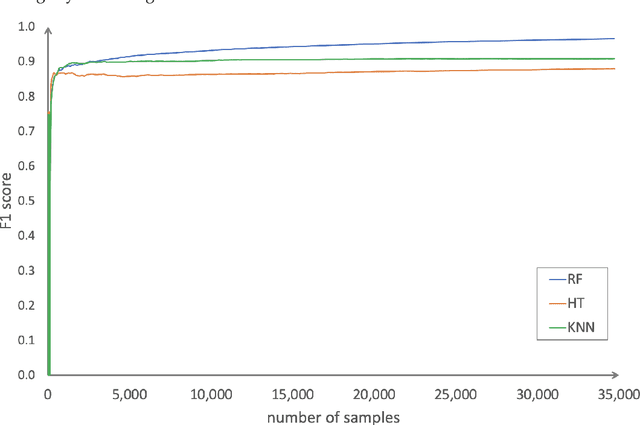

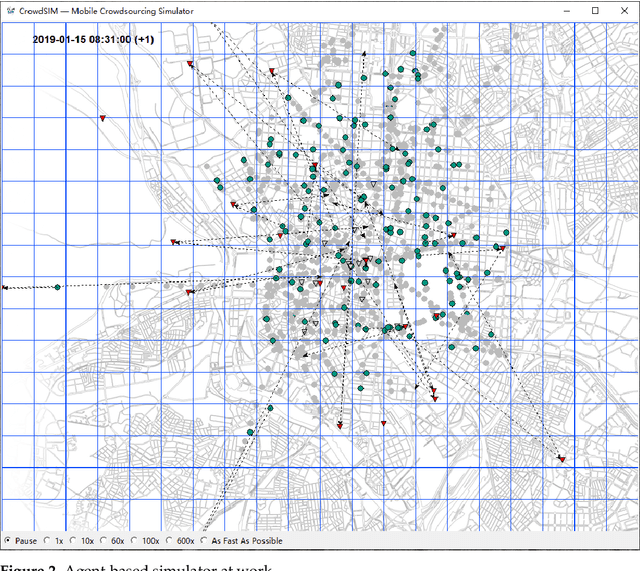
Abstract:Mobile crowdsourcing refers to systems where the completion of tasks necessarily requires physical movement of crowdworkers in an on-demand workforce. Evidence suggests that in such systems, tasks often get assigned to crowdworkers who struggle to complete those tasks successfully, resulting in high failure rates and low service quality. A promising solution to ensure higher quality of service is to continuously adapt the assignment and respond to failure-causing events by transferring tasks to better-suited workers who use different routes or vehicles. However, implementing task transfers in mobile crowdsourcing is difficult because workers are autonomous and may reject transfer requests. Moreover, task outcomes are uncertain and need to be predicted. In this paper, we propose different mechanisms to achieve outcome prediction and task coordination in mobile crowdsourcing. First, we analyze different data stream learning approaches for the prediction of task outcomes. Second, based on the suggested prediction model, we propose and evaluate two different approaches for task coordination with different degrees of autonomy: an opportunistic approach for crowdshipping with collaborative, but non-autonomous workers, and a market-based model with autonomous workers for crowdsensing.
Smart Recommendations for Renting Bikes in Bike Sharing Systems
Jan 22, 2024Abstract:Vehicle-sharing systems -- such as bike-, car-, or motorcycle-sharing systems -- have become increasingly popular in big cities in recent years. On the one hand, they provide a cheaper and environmentally friendlier means of transportation than private cars, and on the other hand, they satisfy the individual mobility demands of citizens better than traditional public transport systems. One of their advantages in this regard is their availability, e.g., the possibility of taking (or leaving) a vehicle almost anywhere in a city. This availability obviously depends on different strategic and operational management decisions and policies, such as the dimension of the fleet or the (re)distribution of vehicles. Agglutination problems -- where, due to usage patterns, available vehicles are concentrated in certain areas, whereas no vehicles are available in others -- are quite common in such systems, and need to be dealt with. Research has been dedicated to this problem, specifying different techniques to reduce imbalanced situations. In this paper, we present and compare strategies for recommending stations to users who wish to rent or return bikes in station-based bike-sharing systems. Our first contribution is a novel recommendation strategy based on queuing theory that recommends stations based on their utility to the user in terms of lower distance and higher probability of finding a bike or slot. Then, we go one step further, defining a strategy that recommends stations by combining the utility of a particular user with the utility of the global system, measured in terms of the improvement in the distribution of bikes and slots with respect to the expected future demand, with the aim of implicitly avoiding or alleviating balancing problems. We present several experiments to evaluate our proposal with real data from the bike sharing system BiciMAD in Madrid.
On-Time Delivery in Crowdshipping Systems: An Agent-Based Approach Using Streaming Data
Jan 22, 2024


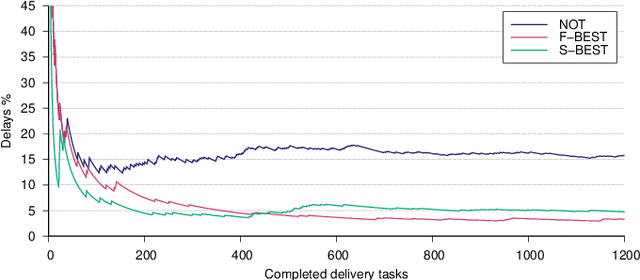
Abstract:In parcel delivery, the "last mile" from the parcel hub to the customer is costly, especially for time-sensitive delivery tasks that have to be completed within hours after arrival. Recently, crowdshipping has attracted increased attention as a new alternative to traditional delivery modes. In crowdshipping, private citizens ("the crowd") perform short detours in their daily lives to contribute to parcel delivery in exchange for small incentives. However, achieving desirable crowd behavior is challenging as the crowd is highly dynamic and consists of autonomous, self-interested individuals. Leveraging crowdshipping for time-sensitive deliveries remains an open challenge. In this paper, we present an agent-based approach to on-time parcel delivery with crowds. Our system performs data stream processing on the couriers' smartphone sensor data to predict delivery delays. Whenever a delay is predicted, the system attempts to forge an agreement for transferring the parcel from the current deliverer to a more promising courier nearby. Our experiments show that through accurate delay predictions and purposeful task transfers many delays can be prevented that would occur without our approach.
Towards a prioritised use of transportation infrastructures: the case of vehicle-specific dynamic access restrictions to city centres
Jan 22, 2024Abstract:One of the main problems that local authorities of large cities have to face is the regulation of urban mobility. They need to provide the means to allow for the efficient movement of people and distribution of goods. However, the provisioning of transportation services needs to take into account general global objectives, like reducing emissions and having more healthy living environments, which may not always be aligned with individual interests. Urban mobility is usually provided through a transport infrastructure that includes all the elements that support mobility. On many occasions, the capacity of the elements of this infrastructure is lower than the actual demand and thus different transportation activities compete for their use. In this paper, we argue that scarce transport infrastructure elements should be assigned dynamically and in a prioritised manner to transport activities that have a higher utility from the point of view of society; for example, activities that produce less pollution and provide more value to society. In this paper, we define a general model for prioritizing the use of a particular type of transportation infrastructure element called time-unlimited elements, whose usage time is unknown a priori, and illustrate its dynamics through two use cases: vehicle-specific dynamic access restriction in city centres (i) based on the usage levels of available parking spaces and (ii) to assure sustained admissible air quality levels in the city centre. We carry out several experiments using the SUMO traffic simulation tool to evaluate our proposal.
Streamlining Advanced Taxi Assignment Strategies based on Legal Analysis
Jan 22, 2024Abstract:In recent years many novel applications have appeared that promote the provision of services and activities in a collaborative manner. The key idea behind such systems is to take advantage of idle or underused capacities of existing resources, in order to provide improved services that assist people in their daily tasks, with additional functionality, enhanced efficiency, and/or reduced cost. Particularly in the domain of urban transportation, many researchers have put forward novel ideas, which are then implemented and evaluated through prototypes that usually draw upon AI methods and tools. However, such proposals also bring up multiple non-technical issues that need to be identified and addressed adequately if such systems are ever meant to be applied to the real world. While, in practice, legal and ethical aspects related to such AI-based systems are seldomly considered in the beginning of the research and development process, we argue that they not only restrict design decisions, but can also help guiding them. In this manuscript, we set out from a prototype of a taxi coordination service that mediates between individual (and autonomous) taxis and potential customers. After representing key aspects of its operation in a semi-structured manner, we analyse its viability from the viewpoint of current legal restrictions and constraints, so as to identify additional non-functional requirements as well as options to address them. Then, we go one step ahead, and actually modify the existing prototype to incorporate the previously identified recommendations. Performing experiments with this improved system helps us identify the most adequate option among several legally admissible alternatives.
Agreement Technologies for Coordination in Smart Cities
Jan 21, 2024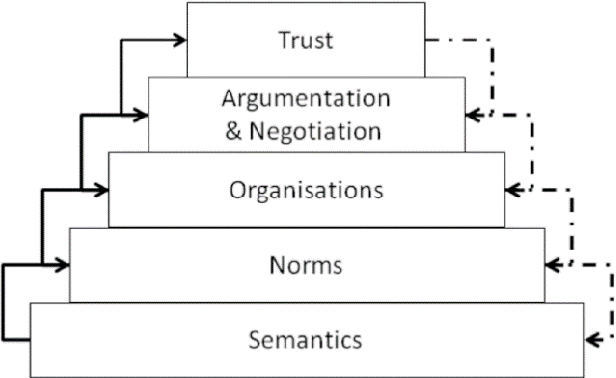
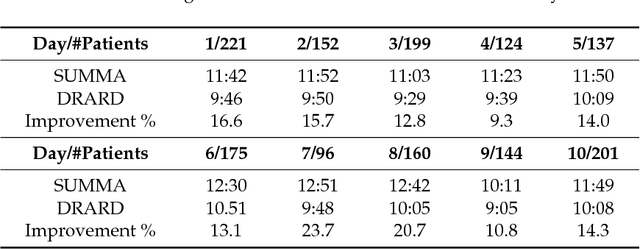

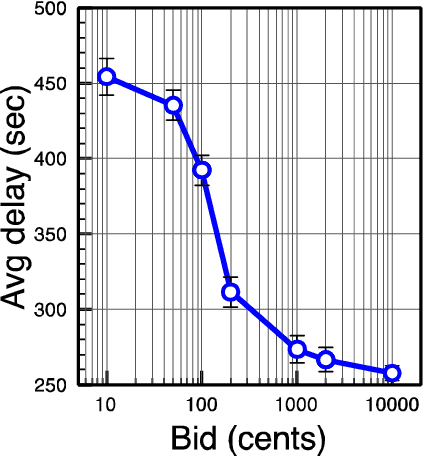
Abstract:Many challenges in today's society can be tackled by distributed open systems. This is particularly true for domains that are commonly perceived under the umbrella of smart cities, such as intelligent transportation, smart energy grids, or participative governance. When designing computer applications for these domains, it is necessary to account for the fact that the elements of such systems, often called software agents, are usually made by different designers and act on behalf of particular stakeholders. Furthermore, it is unknown at design time when such agents will enter or leave the system, and what interests new agents will represent. To instil coordination in such systems is particularly demanding, as usually only part of them can be directly controlled at runtime. Agreement technologies refer to a sandbox of tools and mechanisms for the development of such open multiagent systems, which are based on the notion of agreement. In this paper, we argue that agreement technologies are a suitable means for achieving coordination in smart city domains, and back our claim through examples of several real-world applications.
 Add to Chrome
Add to Chrome Add to Firefox
Add to Firefox Add to Edge
Add to Edge